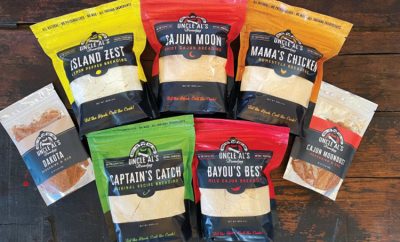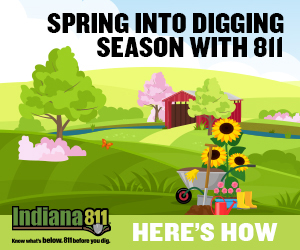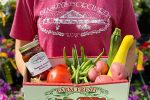Easy-to-Grow Herbs Flavor Grilled Meats and Vegetables

Photo credit: iStock/Olivia
Summer and barbecue go hand in hand, and easy-to-grow herbs enhance delicious seasonal flavors. With a few selections of veggies and herbs from the garden or farmers market, you’ll have a mouthwatering feast.
Tomatoes, peppers and eggplant are commonly grilled as side dishes for vegetarians, vegans or meat-eaters alike. But what about herbs? Can they be grilled with veggies and meats? Yes, they can, and it’s simple to do with easy-to-grow herbs.
Woody herbs like sage, rosemary and lavender can take the heat without burning themselves. Add to grilled beef, chicken, lamb or fish after browning on one side and turning over once. Add to veggies just as they finish up. Or, if grilling vegetables in aluminum foil, add the herbs when starting out.
Here are some tips to help your herbs prosper throughout grilling season and beyond.
See more: Add Tropical Splendor to Your Indiana Landscape

Photo credit: Mizina/Getty Images via Canva.com
How to Grow Rosemary
Rosemary (Rosmarinus officinalis) is not winter hardy throughout most, if not all, of Indiana. Many gardeners and foodies grow rosemary in pots so they can take the plant inside to continue harvesting the stems in winter. You also can plant it in the ground and either grow it as an annual or dig it up, pot it and take it indoors. While indoors, give it as much light as possible.
Rosemary is a shrub native to the Mediterranean, so it’s at home in full sun and fast-draining soil or gravel when planted in the ground. If planting in a container, use a high-quality potting mix. Because it is a woody shrub, new growth is slow. So, if you use a lot of rosemary, grow more than one plant.

Photo credit: MsLibri/Pixabay via Canva.com
How to Grow Lavender
Lavender (Lavandula angustifolia) is another Mediterranean plant and an easy-to-grow herb in Indiana. Several varieties, including English lavender, are winter hardy throughout Indiana. Lavender is usually grown in the ground because it is a hardy, woody perennial, but it also can be grown in a pot.
Grow in full sun in soil that drains well. It winters better when stems are allowed to remain on the plant. In spring, cut stems back to about 2 inches. If bringing indoors for winter, place in a sunny window.
See more: Learn How to Avoid Common Basil and Impatiens Diseases

Photo credit: Markus Volk/Getty Images via Canva.com
How to Grow Sage
Culinary sage is probably best known as a Thanksgiving herb. But sage (Salvia officinalis) has a role in grilling, too, particularly with chicken and sweet potatoes. Many grillers throw sage on the hot coals to enhance the smoky flavor of the food on the grill.
Culinary sage sports the familiar, salvia-like blue flower, which is edible. It is winter hardy in Indiana, so most gardeners and foodies grow it in the ground. It can also be grown in pots. Grow in full sun, and water when the top inch of soil is dry.

Photo credit: Marcin Jucha via Canva.com
More Options
Almost any herb can be used to flavor all types of foods – grilled or otherwise. Herbs are basic ingredients in flavorful marinades for meats and vegetables. Chop some fresh herbs in salads, dressings, sauces or gravies.
Parsley, fennel, dill, cilantro and basil are other easy-to-grow herbs both in the ground or in pots. Parsley, fennel and dill attract and support black swallowtail butterflies and their caterpillars, so these herbs feed many mouths.
See more: Best Vegetables to Grow in Small Spaces
About the Author: A popular speaker, Jo Ellen Meyers Sharp blogs at hoosiergardener.com. Sign up for her free, award-winning monthly newsletter eepurl.com/gkfb91.













 My Indiana Home is produced for Indiana Farm Bureau members. Our mission is to connect you with the food you eat, the Indiana farmers who grow it and a rural lifestyle that is uniquely Hoosier.
My Indiana Home is produced for Indiana Farm Bureau members. Our mission is to connect you with the food you eat, the Indiana farmers who grow it and a rural lifestyle that is uniquely Hoosier.
Leave a Comment